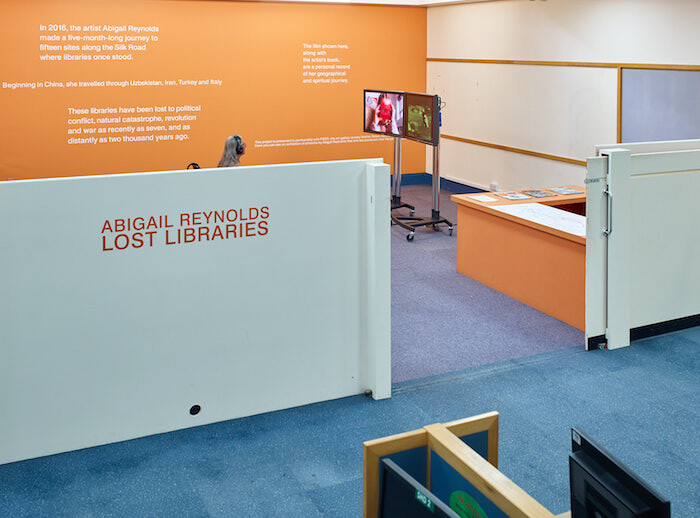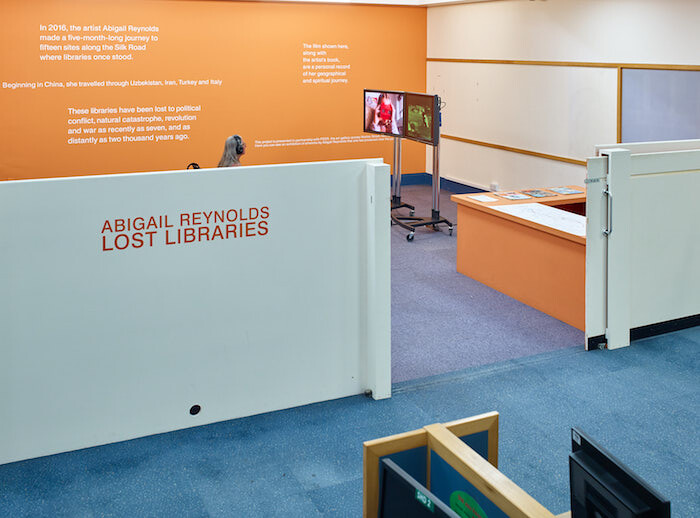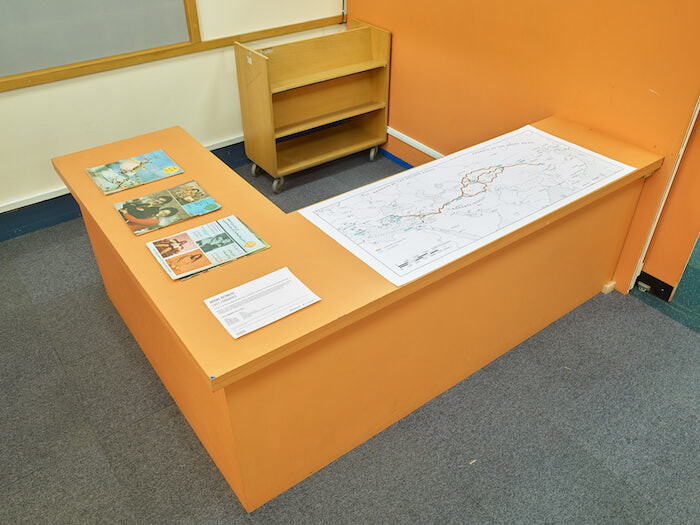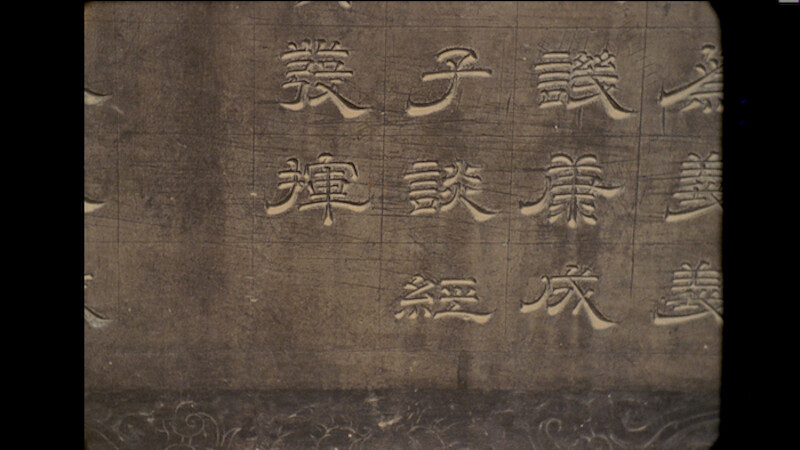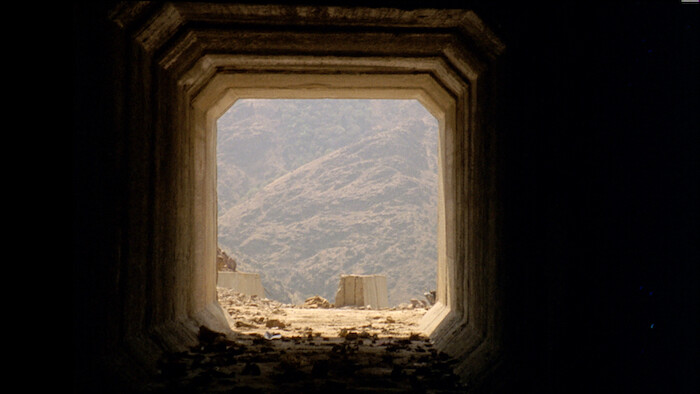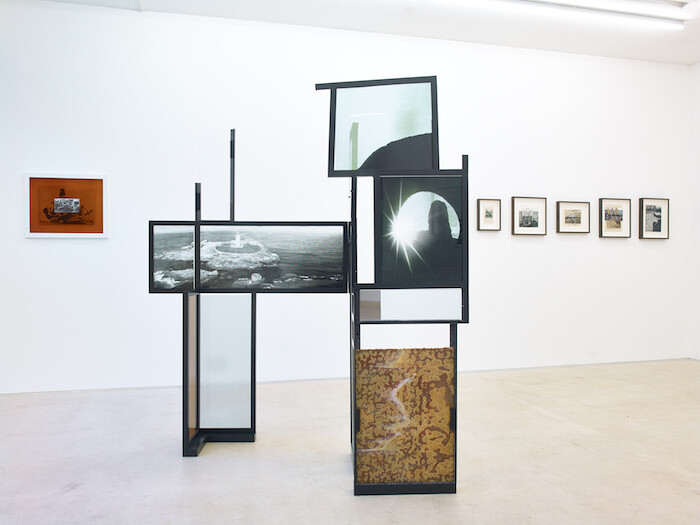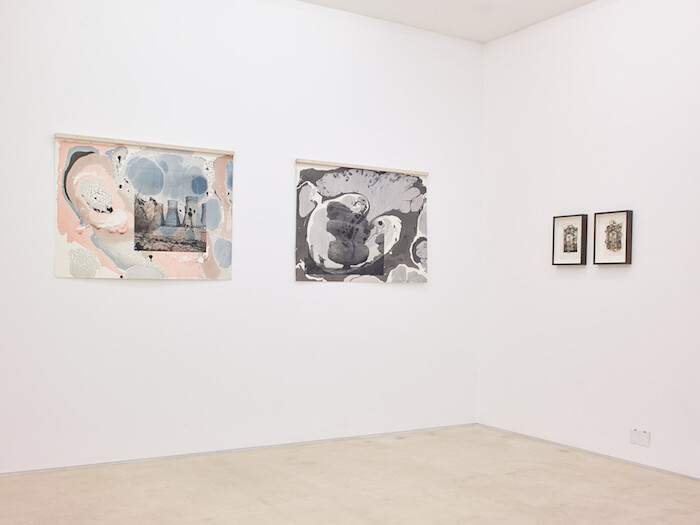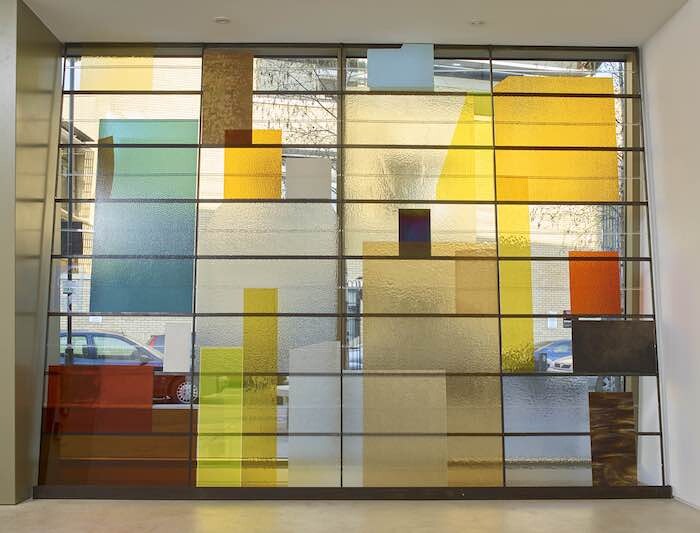“Many artists consider books and libraries to be oppressive hierarchies of knowledge, dogmatic and hectoring,” writes artist Abigail Reynolds in her new book Lost Libraries. But Reynolds does not agree: “I consider them the gates of freedom.”1 Three simultaneous exhibitions in east London exemplify this fascination with books and their material relationship to time and knowledge: a display of artist books at bookartbookshop, an artists’ bookshop; a retrospective including collaged book pages at PEER gallery; and a new film work, Lost Libraries (2018), showing on two television screens among the books and computers of Shoreditch Library.
Both book and film versions of Lost Libraries are the result of a journey undertaken by Reynolds between 2016 and 2017. Given financial and logistical support as the third recipient of the BMW Art Journey, a project by BMW and Art Basel that commissions artists to visit foreign locations and create new work, Reynolds travelled by plane and motorbike along the Silk Road from Xi’an, China, to Rome, Italy, visiting the sites of 15 libraries lost or destroyed over the past 2000 years. In Nishapur, Iran, she went to an empty field where a library once stood. In a museum in Xi’an, the characters of a Confucian text, carved on stone tablets, are arranged like a constellation. Some libraries have only recently been lost, such as the one destroyed during the 2011 revolution in Cairo. Others she cannot visit at all, on account of ongoing war or labyrinthine bureaucracy.
By showing Lost Libraries in Shoreditch Library, Reynolds frames the project in the context of the widespread closure of libraries and funding cuts to library services across Britain under the Conservative-led governments of David Cameron and Theresa May. More than 478 public libraries have closed in Britain since 20102 and at least 14 million library books are no longer publicly available.3 Such losses can be dramatic and sudden, or silent and slow. “In England, we’re just letting go of our libraries,” Reynolds says in the film. “We’ve forgotten how important they are.”
Both book and film interweave a multitude of overlapping histories with the personal account of Reynolds’s own journey. The 17-minute film summons evocative impressions: crumbling archways, a motorbike in the desert, a lush green landscape, a cat among the ruins, and cracked marble. The film’s strengths include the use of multiple female narrators and a series of revealing conversations with the artist’s children, which prompt Reynolds to justify her journey in simple terms. “How did you just film nothing?” asks one child. “I don’t think there’s ever really nothing,” Reynolds responds.
The book is the richer of the two titular works. Its length and structure enable a more concerted attention to the specificity of individual places, allowing striking details to emerge: two women sweep a courtyard and leave the dust “licked like a kitten’s fur.”4 The book also allows for a deeper exploration of the complexities of history, myth, and politics. It recalls epochal tales—she writes about the Uthman Quran, said to be stained with the blood of Tamerlane, which was taken to St. Petersburg by a Russian general in 1869 and returned to Uzbekistan by Lenin himself—alongside personal ones. Of the latter, few are more vivid than an argument between Reynolds’s guide and a writer in Tehran. The argument—concerning whether Reynolds should be free to attend a party alone—may seem trivial, but it exposes a wider conflict in how Iran wishes to represent itself: modern and free, or traditional and restrained.
It is instructive to experience both book and film in the context of Reynolds’s retrospective at PEER. Works produced between 2010 and 2018 showcase her ongoing commitment to the materiality of meaning, and the meaning of materiality, from prints and collages to more recent forays into installations of steel and multicolored glass. There are collaged book pages depicting identical places in London 20 years apart (“The Universal Now,” 2010–11); black-and-white photographs of a collapsed overpass in California spliced with the London-to-Birmingham motorway (“Land,” 2012–15); and various photographs of protest, grand interiors, and tower blocks on fire. Reynolds cuts and folds, arranges and rearranges these images to create works of geometric beauty and conceptual dissonance, tackling heated political themes with detached precision.
Reynolds’s work has long obsessed over the materiality of books as a way of exploring their existence in, and relationship to, time. Lost Libraries connects these material objects, and the damage done to them, to humanity’s propensity for “brutality towards our own time-bound corpses.”5 Libraries are mortal objects. Books are burned, lost, stolen, and rediscovered; scholars are attacked, killed, and, in one striking image, “buried upside down in orchards like trees.”6 But it is the vulnerability of Reynolds herself that seems most present, especially following her arrest for filming in Cairo. Her personal involvement provides an emotional and bodily focal point for the work. “I feel so light,” she says in the film, comparing her body to the bulky heft of her 16mm Bolex camera. It is left unsaid whether this is cause for hope or for further anxiety.
Abigail Reynolds, Lost Libraries (Berlin: Hatje Cantz, 2017), 43.
https://www.theguardian.com/commentisfree/2017/dec/15/tories-libraries-social-mobility-conservative.
https://www.telegraph.co.uk/news/politics/conservative/12102686/14-million-fewer-books-available-in-libraries-than-when-David-Cameron-took-office.html.
Abigail Reynolds, Lost Libraries (Berlin: Hatje Cantz, 2017), 118.
Ibid., 74–5.
Ibid., 46.
